The world of business can often feel overwhelming for beginners, with its complex concepts and strategies. However, using business mind maps can simplify these concepts and provide a clear perspective. In this article, we delve into 18 specific business mind map examples designed for beginners. These examples cover a range of business subjects and will help those new to the field to easily grasp and understand various business strategies. Whether you're a budding entrepreneur, a business student, or simply interested in learning more about the business world, these mind maps offer a straightforward and visually engaging starting point.
What is a mind map for business?
A mind map for business is an efficient tool that helps organize, analyze, and present information related to various aspects of a business. Business mind maps can cover a variety of topics, ranging from business planning to marketing strategies. With the aid of a business mind map, you and your team can unleash your potential and improve efficiency. Read the following passage to learn 20+ useful business mind map examples for beginners.
Business mind map examples
Meeting Minutes Mind Map
Meeting minutes are the formal written record of a meeting. As is shown in the mind map, it usually includes a complete account of discussions, the attendee's list, and notes of each participant's statements. Meeting minutes are used to provide a reference for attendees to review or follow up on tasks and responsibilities mentioned in the meeting, which is bound to promote effective collaboration and communication for your team.
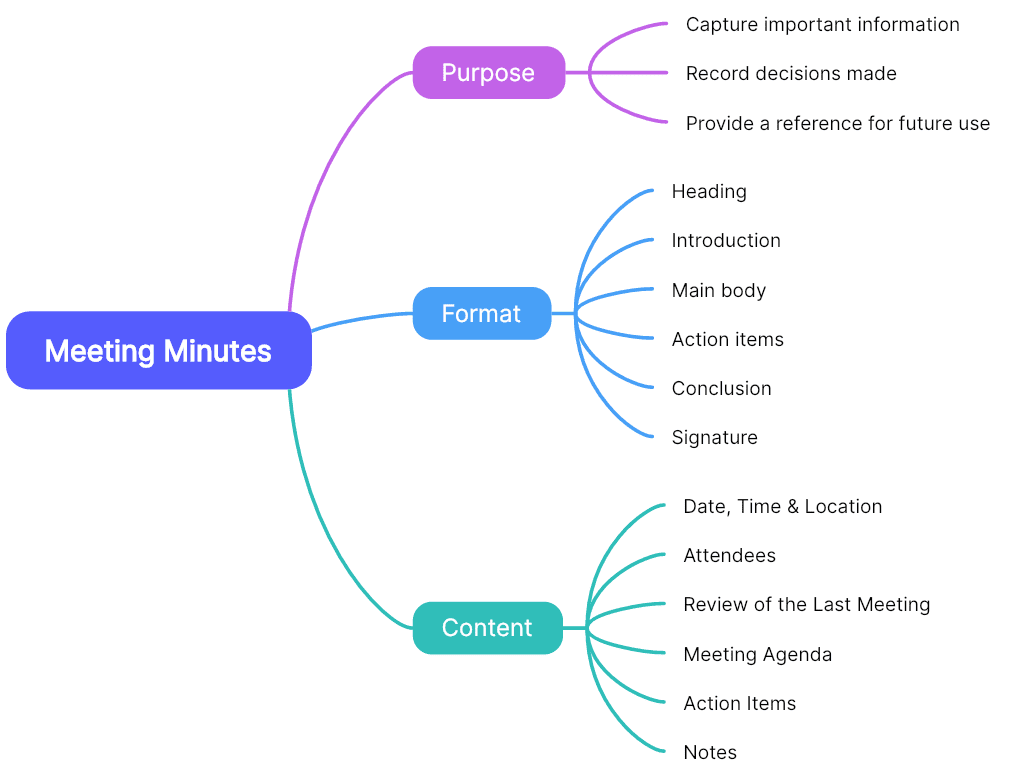
Porter's Five Forces Mind Map
Developed by Michael Porter, a renowned Harvard Business School professor, Porter's five forces is a framework that helps analyze the competitive dynamics of a specific industry. It consists of the following five key factors: the threat of new entrants, bargaining power of suppliers, bargaining power of buyers, threat of substitute products or services, and intensity of competitive rivalry. With Porter's five forces, you can gain insights into the market and adapt your company's strategies accordingly.
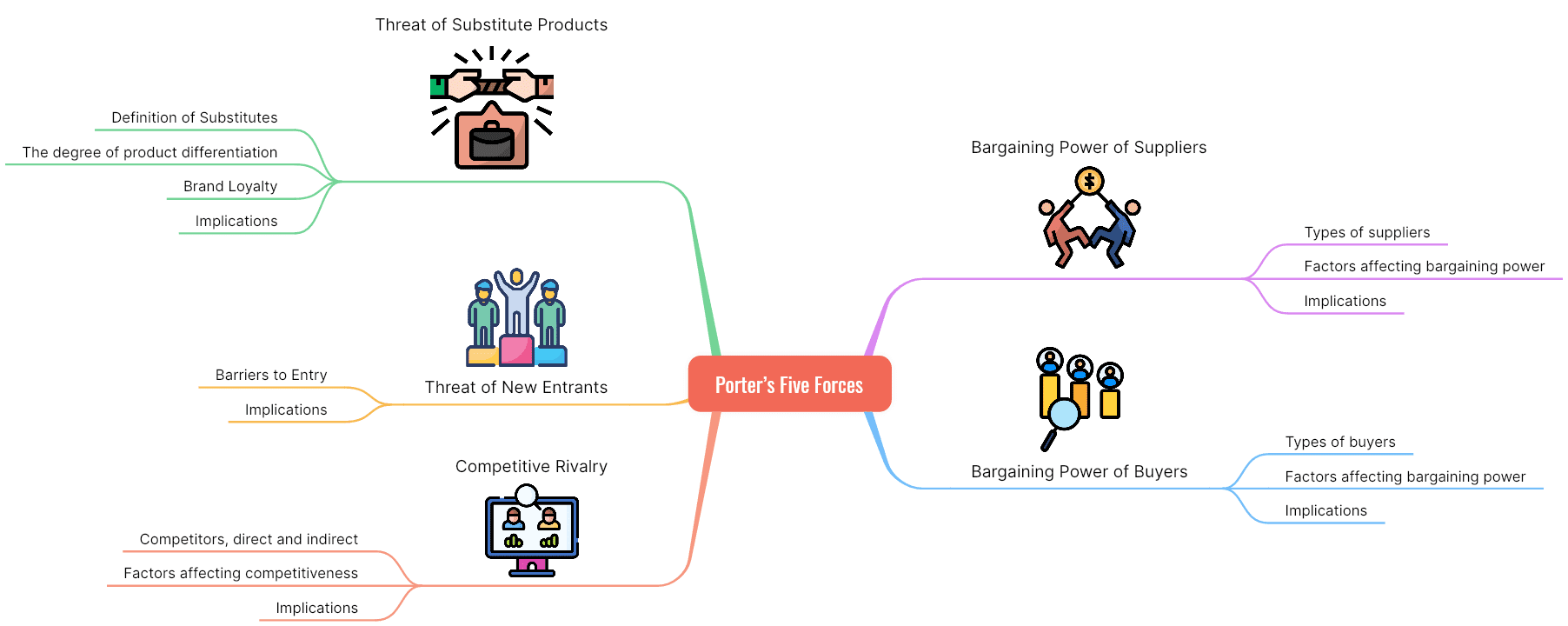
Business Model Canvas Mind Map
Developed by Alexander Osterwalder and Yves Pigneur, the business model canvas is a tool that provides a visual representation of how a business creates, delivers, and captures value. As is shown in the example below, a business model canvas should include key partners, key activities, customer segments, key resources, cost structure, value propositions, customer relationships, channels, and revenue streams. It is a versatile tool that can be used to describe, design, and analyze business models. It provides a comprehensive view of the various components of a business and their interconnections, enabling entrepreneurs, managers, and stakeholders to understand and communicate the key elements necessary for its success.
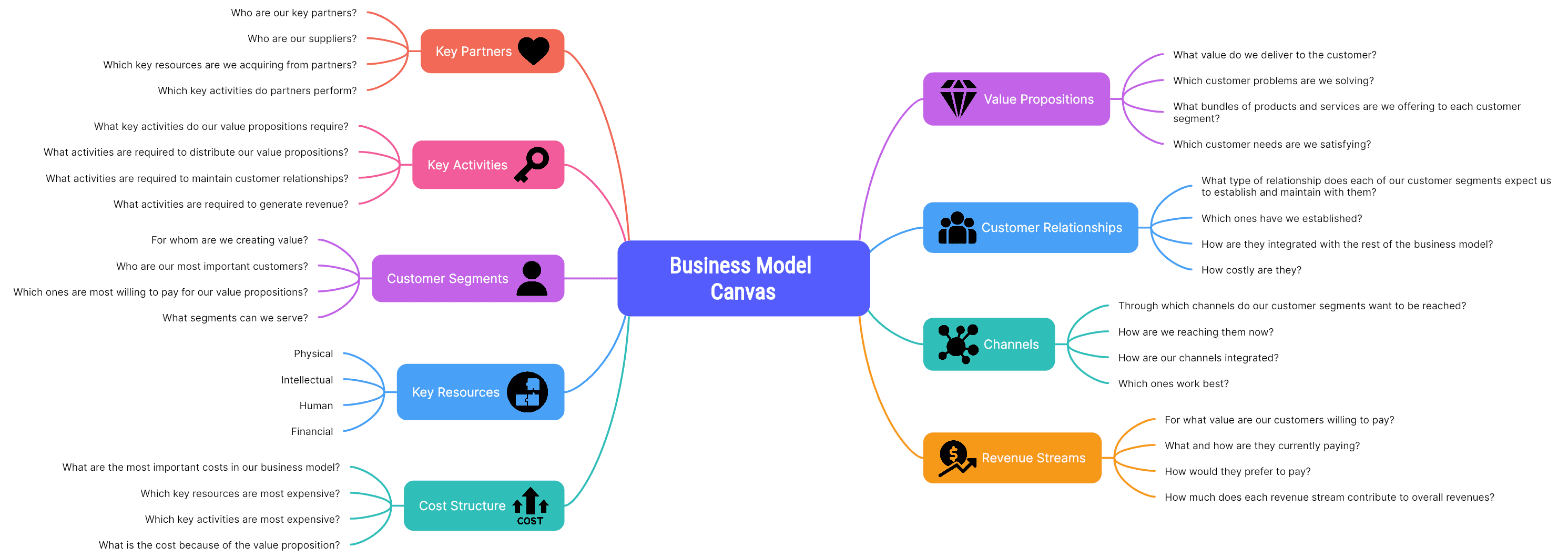
PESTLE Analysis Mind Map
PESTLE analysis is a strategic framework used to analyze the external macro-environmental factors that can impact an organization or industry. It examines various factors across six key dimensions, namely political, economic, social, technological, legal, and environmental factors. It is a valuable tool for strategic planning, risk assessment, market analysis, and policy development.
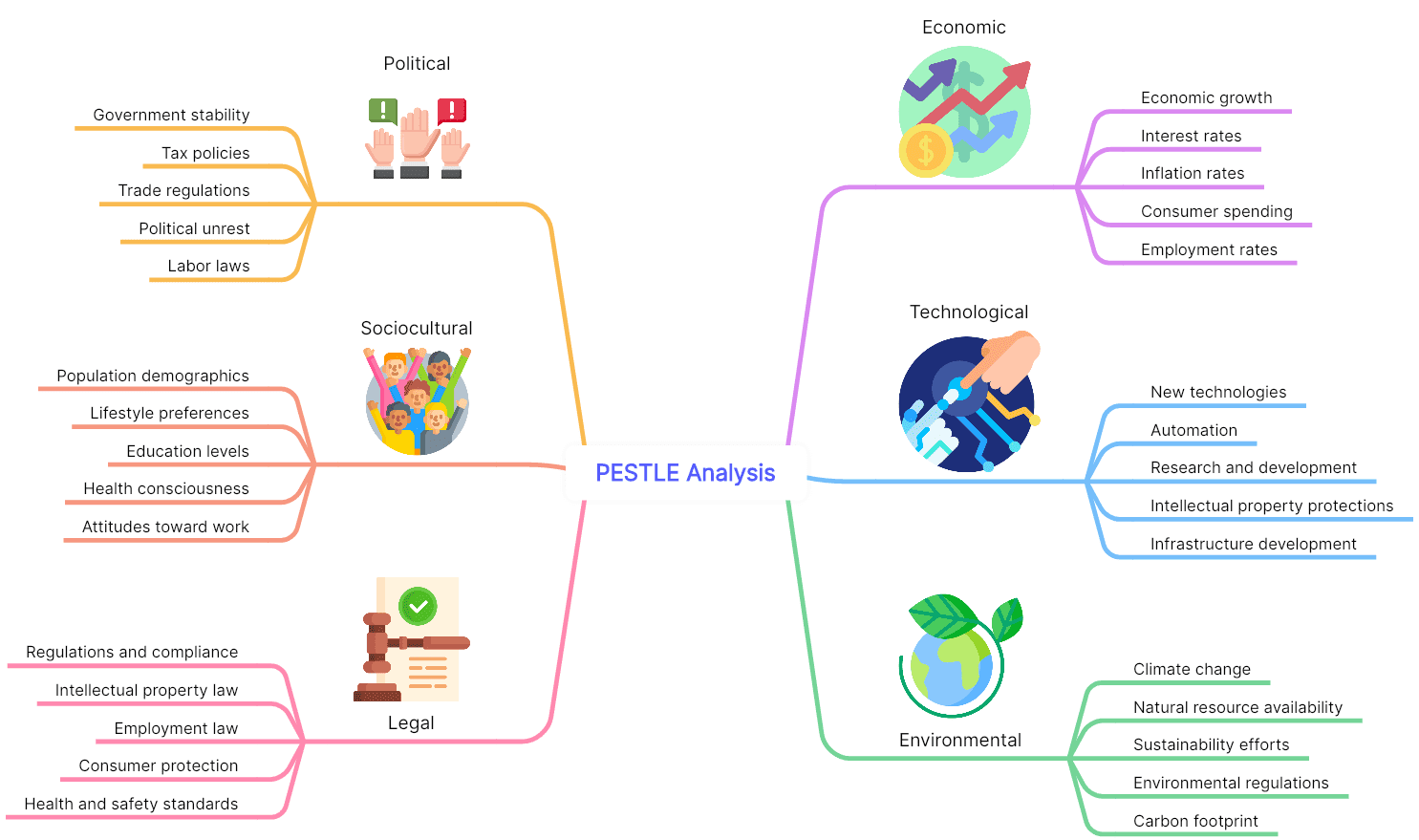
SWOT Analysis Mind Map
SWOT analysis is a strategic planning tool used to evaluate the strengths, weaknesses, opportunities, and threats associated with a business, project, or individual. It helps in identifying internal and external factors that can impact the current and future performance of the subject being analyzed.

Time Management Strategy Mind Map
Time management is crucial for individuals seeking to maximize productivity, efficiency, and overall effectiveness. A time management strategy refers to a systematic approach that helps individuals prioritize tasks, allocate time effectively, and accomplish goals within a given timeframe. By implementing a well-planned time management strategy, individuals can better focus their efforts, reduce stress, and achieve a better work-life balance. Read the following mind map to know more about how to better plan your time and promote efficiency.
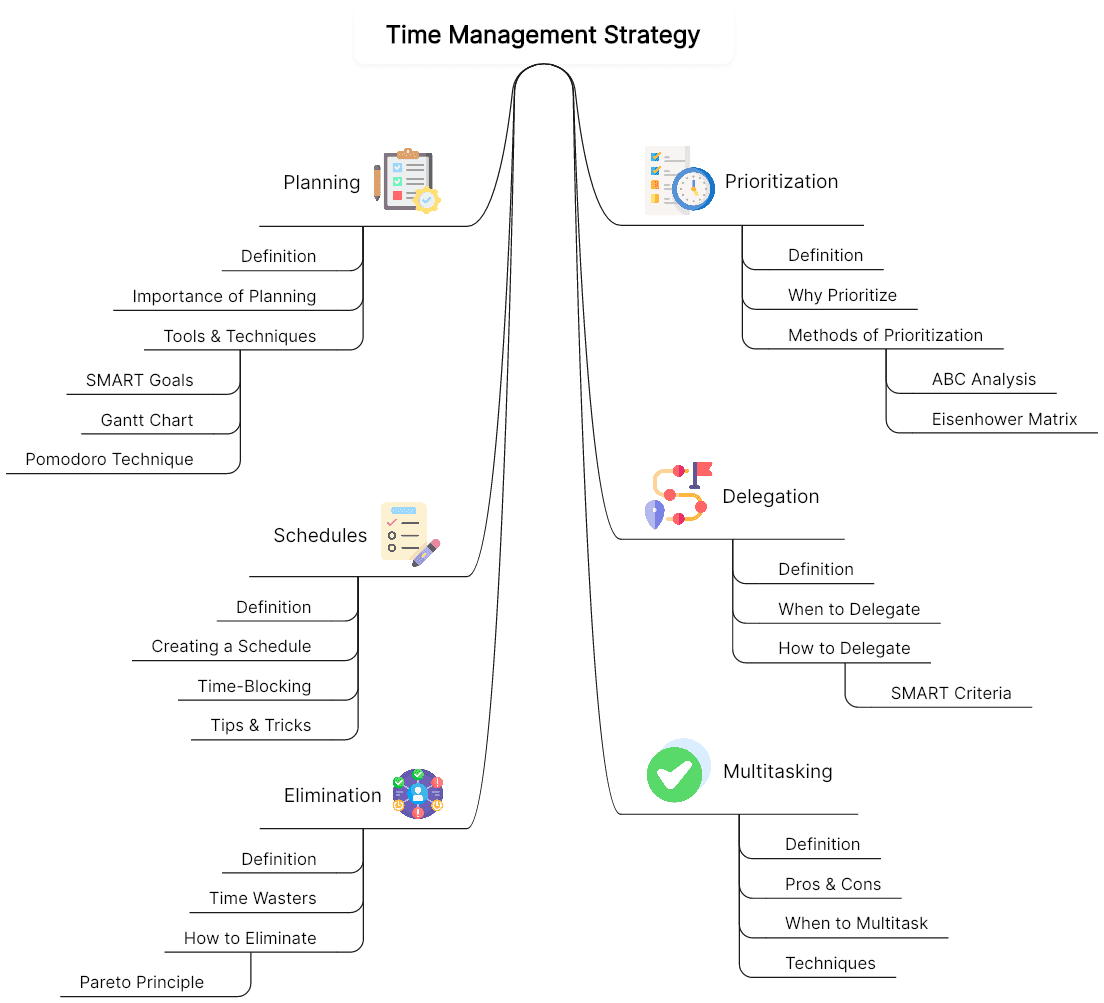
Risk Assessment Mind Map
Risk assessment is a systematic process of identifying, analyzing, and evaluating potential risks or threats related to a specific activity, project, or situation. It involves evaluating the likelihood and potential of these risks to determine their significance and prioritize appropriate risk management measures. The main goal of it is to identify and understand potential risks that could affect the success, safety, and reputation of an organization or individual. Read the mind map below to learn more about risk assessment.
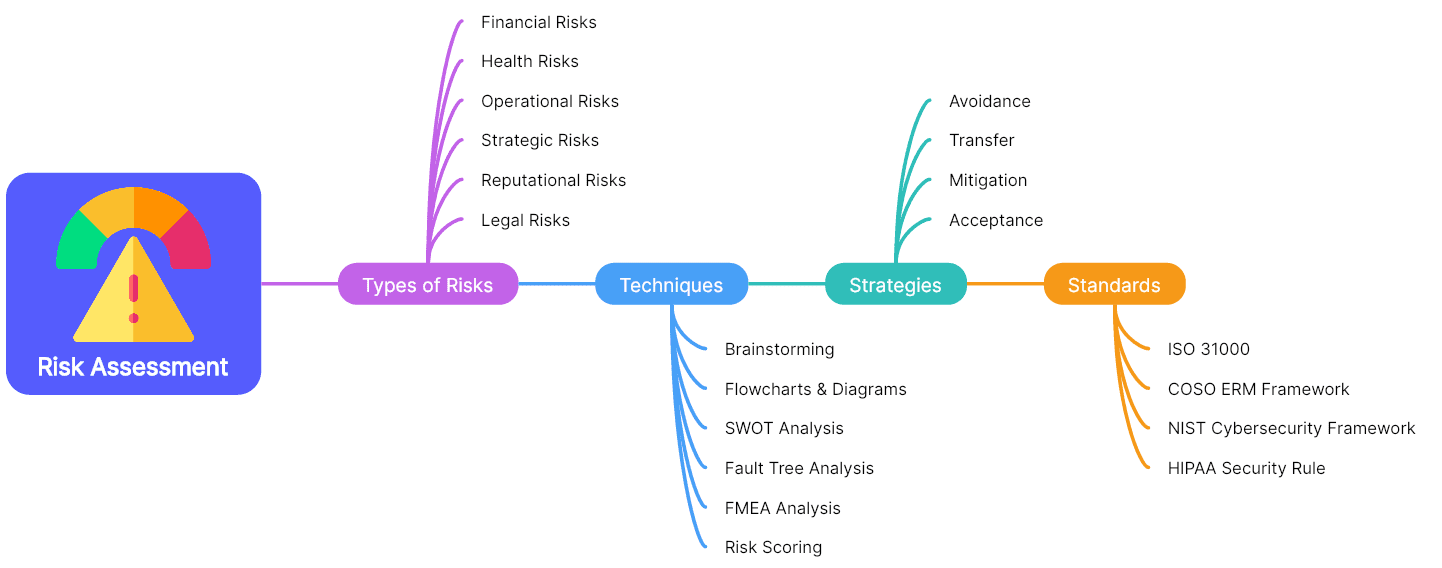
Budgeting Mind Map
Budgeting is the process of creating a plan for how to allocate financial resources within a given timeframe. It involves estimating future income and expenses, setting financial goals, and making informed decisions about resource allocation. Budgeting plays a crucial role in financial management and strategic planning for a business. It assists in financial planning, decision-making, and performance evaluation. Besides, it also helps manage cash flow and enhance collaboration.

Social Media Management Mind Map
Social media management refers to the process of managing a company's online presence and engagement on various social media platforms. It involves creating, scheduling, analyzing, and engaging with content posted on social media channels to build and maintain a brand's online identity, reputation, and community. Read the mind map below to explore more about social media management.
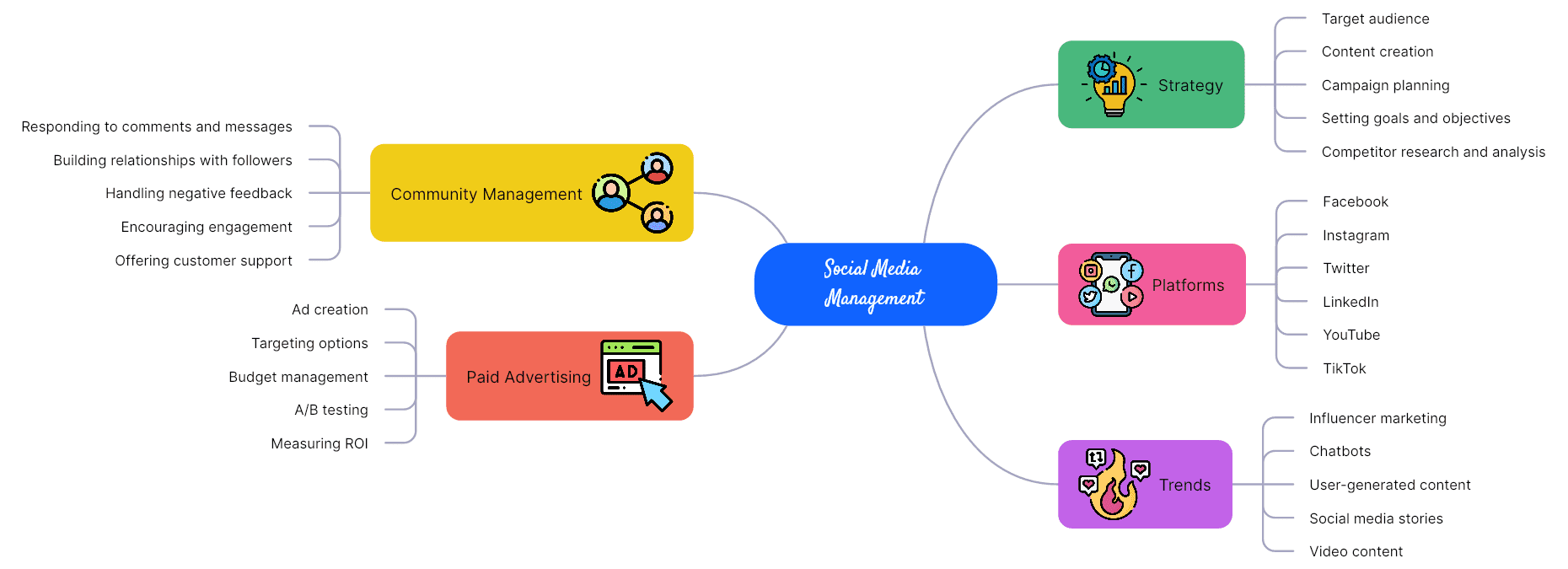
E-Commerce Platform Mind Map
E-commerce, short for electronic commerce, refers to the buying and selling of goods and services conducted over the Internet. It has revolutionized the way businesses operate, and consumers shop. It allows businesses to reach a global audience, operate 24/7, reduce overhead costs, and offer personalized shopping experiences. For consumers, e-commerce offers convenience and the capability to compare prices and reviews before buying things.
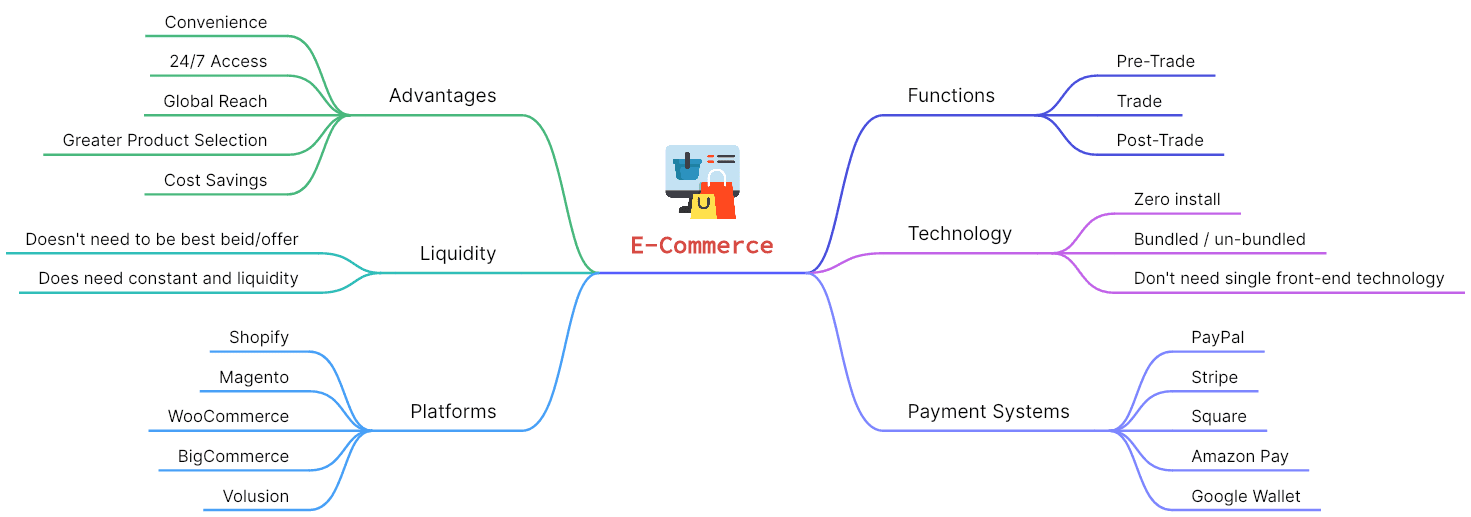
Marketing Automation Mind Map
Marketing automation means adopting software and technology to automate and streamline various marketing tasks and processes. It helps businesses effectively manage and nurture leads, execute marketing campaigns, and analyze performance, all while saving time and improving efficiency. It is particularly useful for businesses that engage in complex sales funnels, have a large volume of leads, or aim to streamline and optimize their marketing efforts. Read the mind map below to learn more about it.

Project Management Mind Map
Project management is the process that involves planning, organizing, and controlling resources, tasks, and activities to successfully achieve objectives within a defined timeframe and budget. Mind maps can visualize the organization of the project and help members understand the big picture while still being able to drill down into specific details. They help project managers effectively plan, execute, and monitor projects, leading to improved project outcomes and successful project delivery.

Investment Management Mind Map
Investment management is the professional management of various financial assets to achieve specific investment goals. It involves the strategic planning, analysis, and execution of investment decisions on behalf of individuals, institutions, or entities. Using a mind map to manage investment, you can visualize your assets and distribute your money more wisely. As is shown in the following example, the distribution of your money can be clearly presented in a single mind map, assisting your investment management.

Product Launch Mind Map
Product launching refers to the process of introducing a new product to the market. It is aimed at creating awareness, generating interest, and driving sales of the new product. A successful launch is crucial to establish a strong market presence, compete effectively, and capture the target audience's attention. Read the mind map below to learn some basic steps necessary when launching a product.
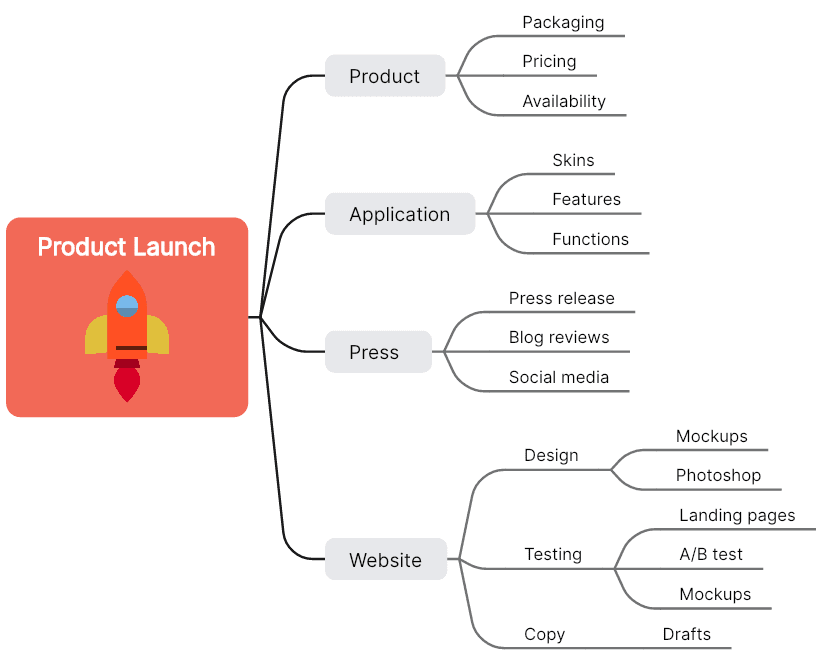
BCG Matrix of Coca-Cola
Developed by the Boston Consulting Group in the 1970s, BCG Matrix is a framework for portfolio management used for strategic planning and decision-making regarding investment in competitiveness and market attractiveness. The BCG Matrix categorizes products or business units into four quadrants, namely Stars, Cash Cows, Question Marks, and Dogs. As can be seen in the example below, Kinley and Dasani are Star, while Diet Coke, Sparkling Water, Honest Tea, and Minute Maid are the Question Mark. Both the Cash Cows and Dogs are Coke.
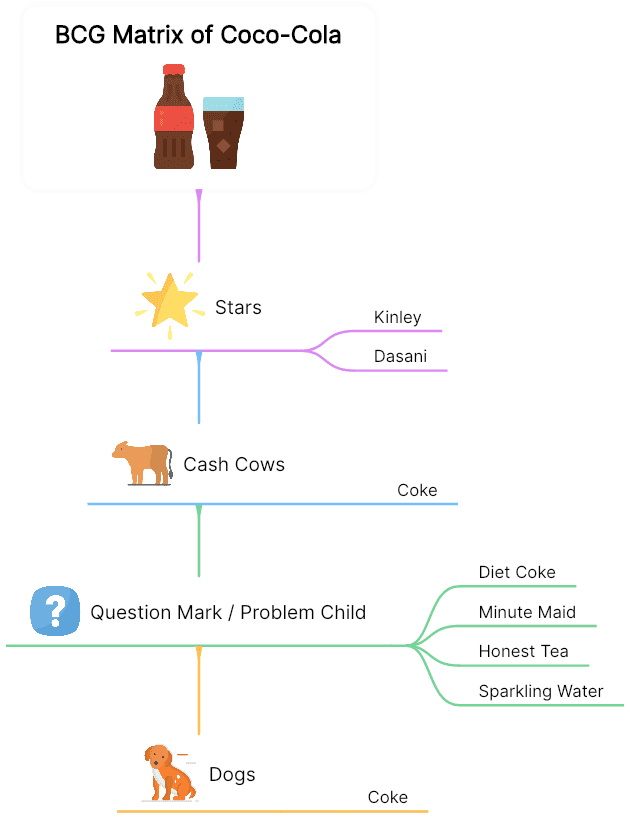
Market Research Mind Map
Market research is the process by which a company seeks to systematically gather, analyze, and interpret data and information regarding a specific market, industry, or target audience. With market research, you can better understand the characteristics, preferences, and behaviors of consumers, competitors, and market trends. Read the mind map below to learn the basic procedure and components of market research.
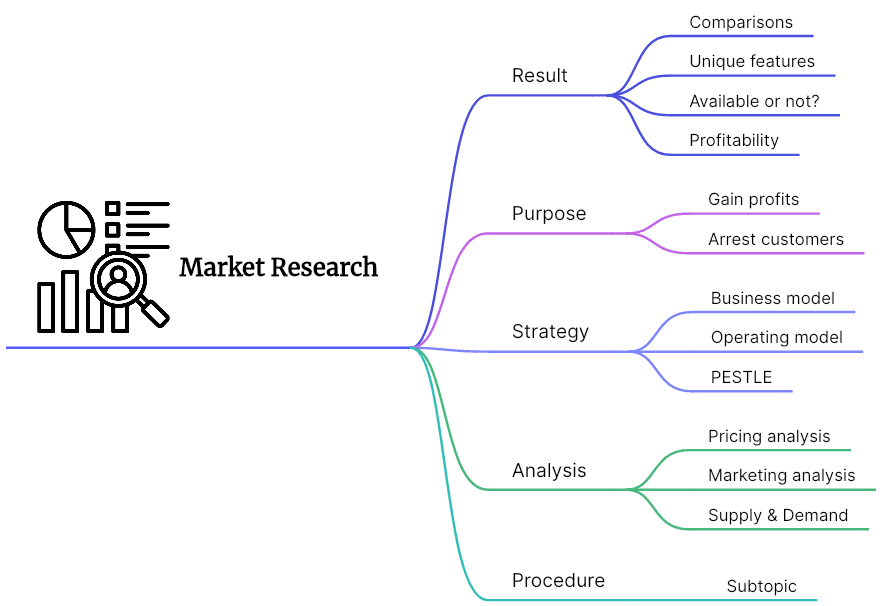
Corporate Strategy Mind Map
Corporate strategy is the overall plan or long-term direction of a corporation, guiding its decision-making process and actions to achieve its objectives and create value for its stakeholders. It involves making choices and allocating resources across various business units, markets, and activities to position the company for sustainable growth and competitive advantage in its industry.

Brainstorming Mind Map
Brainstorming is a creative problem-solving technique that involves generating a large number of ideas for solutions to a specific problem or topic. It is typically done in a group setting, where participants are encouraged to think freely and express their ideas without judgment or criticism. Equipped with brainstorming, you and your team can stay creative and ignited with innovative solutions.

Benefits of a business mind map
As can be seen in the above examples, mind maps are irreplaceable in business. Some of the most notable benefits of it are:
- Improved organization: Mind maps help to visually organize and categorize various components of a business, such as strategies, goals, tasks, and resources. This provides a clear overview of the entire business and allows for better management and decision-making.
- Enhanced creativity and ideation: Mind maps stimulate creative thinking by encouraging the exploration of new ideas, connections, and relationships. By visually representing concepts and brainstorming sessions, it becomes easier to generate innovative solutions and strategies.
- Easy information retention: Mind maps simplify complex information by breaking it down into smaller and more manageable chunks. This aids in information retention as it enables individuals to understand, absorb, and remember information more effectively.
- Effective communication and collaboration: Mind maps provide a shared platform for teams to communicate and collaborate. They facilitate the exchange of ideas, encourage active participation, and improve overall team communication and alignment.









